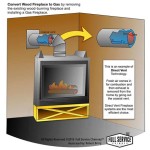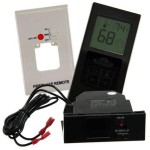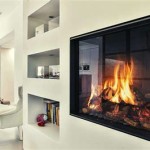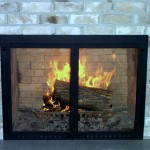Revitalizing Your Hearth: Understanding Cast Iron Fireplace Spray Paint
Cast iron fireplaces, often valued for their historical significance and aesthetic appeal, can suffer from wear and tear over time. Exposure to heat, soot, and moisture can lead to rust, faded paint, and a generally dilapidated appearance. Fortunately, restoring a cast iron fireplace is often achievable with careful planning and the appropriate materials, with cast iron fireplace spray paint playing a crucial role in the revitalization process. This article explores the essential aspects of using spray paint to restore and maintain a cast iron fireplace, focusing on preparation, product selection, and application techniques.
Preparing the Cast Iron Fireplace for Painting
Proper preparation is paramount to achieving a durable and visually appealing finish when painting a cast iron fireplace. This stage involves several steps, each contributing to the successful adhesion of the paint and the longevity of the restoration. Neglecting these preliminary steps can result in peeling, cracking, and premature deterioration of the paint job.
The first step is to thoroughly clean the fireplace. Years of soot, dust, and accumulated grime can create a barrier that prevents the paint from properly bonding to the cast iron. Use a wire brush to remove loose rust and flaking paint. For heavily soiled areas, a solution of warm water and a mild detergent can be applied with a scrub brush. Ensure the surface is completely dry before proceeding to the next step.
Rust removal is a critical component of the preparation process. Even after cleaning, residual rust can compromise the integrity of the paint job. Several methods can be employed for rust removal, depending on the severity of the corrosion. For light surface rust, a wire brush or sandpaper may suffice. For more extensive rust, chemical rust removers or mechanical tools like angle grinders with specialized rust removal attachments may be necessary. Always follow the manufacturer's instructions when using chemical rust removers and exercise caution when using power tools.
Once the rust has been removed, it’s essential to smooth the surface to create a uniform texture for the paint to adhere to. Use progressively finer grits of sandpaper to eliminate any remaining imperfections and create a smooth, even surface. This step is particularly important if the rust removal process has left behind any rough patches or scoring on the cast iron. After sanding, remove any remaining dust and debris with a tack cloth.
Masking off areas that are not to be painted is another crucial step in the preparation process. Use painter's tape and masking paper or plastic sheeting to protect surrounding surfaces, such as the fireplace surround, walls, and flooring. This will prevent overspray and ensure a clean, professional-looking finish. Care should be taken to ensure the masking is securely in place to prevent paint from seeping underneath.
Selecting the Right Cast Iron Fireplace Spray Paint
Choosing the appropriate spray paint is just as important as proper preparation. Not all spray paints are created equal, and selecting a product specifically designed for high-temperature applications on cast iron is essential for a successful restoration. Factors to consider include heat resistance, durability, and desired finish.
Heat resistance is a primary consideration. Fireplace paint must be able to withstand the high temperatures generated by a burning fire. Standard spray paints will likely blister, crack, and peel under these conditions, releasing potentially harmful fumes. Look for spray paints that are specifically formulated for stoves, fireplaces, and other high-heat applications. These paints typically have a heat resistance rating of at least 1200 degrees Fahrenheit (649 degrees Celsius). Verify the manufacturer's specifications to ensure the paint is suitable for the intended use.
Durability is another important factor. The paint must be able to withstand repeated heating and cooling cycles without cracking, chipping, or fading. Cast iron fireplaces are subject to significant temperature fluctuations, which can put stress on the paint film. Choose a paint that is formulated to be flexible and resistant to thermal shock. Consider paints that are specifically designed for use in harsh environments, as they are more likely to withstand the rigors of fireplace use.
The desired finish is a matter of personal preference. Cast iron fireplace spray paints are available in a variety of finishes, including matte, satin, and gloss. Matte finishes tend to be more traditional and can help to conceal imperfections in the surface. Satin finishes offer a subtle sheen and are a good compromise between matte and gloss. Gloss finishes provide a high level of reflectivity and can give the fireplace a more modern look. Consider the overall aesthetic of the room and choose a finish that complements the existing decor. Furthermore, the color should complement the rest of the area.
Consulting with paint specialists or reading online reviews can provide valuable insights into the performance and durability of different spray paint products. Consider the specific characteristics of the fireplace and the intended usage patterns when making a selection. A higher-quality paint will typically provide better results and a longer lifespan.
Applying Cast Iron Fireplace Spray Paint Effectively
The application of the spray paint is the final step in the restoration process, and it requires careful attention to detail to achieve a smooth, even, and durable finish. Proper technique, environmental conditions, and safety precautions all play a role in the outcome.
Before beginning, ensure the area is well-ventilated. Spray painting indoors can create a buildup of fumes that are harmful to breathe. Open windows and doors to provide adequate ventilation, or consider painting outdoors if weather permits. Wear a respirator mask to protect yourself from inhaling paint fumes. Also, wear gloves to protect your hands from overspray.
Shake the spray paint can vigorously for at least two minutes before use. This will ensure that the paint is properly mixed and that the pigments are evenly dispersed. Periodically shake the can during the painting process to maintain consistency. Perform a test spray on a piece of scrap cardboard or paper to check the spray pattern and adjust the nozzle as needed.
Apply the paint in thin, even coats, holding the can approximately 10-12 inches from the surface. Avoid applying too much paint in one coat, as this can lead to runs and drips. Move the can in a smooth, consistent motion, overlapping each pass slightly. Allow each coat to dry completely before applying the next. Multiple thin coats are preferable to one thick coat, as they will result in a more durable and even finish.
Pay attention to corners, crevices, and intricate details of the fireplace. Use short, controlled bursts of spray to reach these areas. Avoid spraying at an angle that will cause the paint to build up or run. If necessary, use a small brush to touch up any areas that are difficult to reach with the spray can.
After the final coat has been applied, allow the paint to dry completely according to the manufacturer's instructions. This may take several hours or even overnight. Avoid touching or handling the painted surface until it is fully cured. Once the paint is dry, carefully remove the masking tape and paper.
After allowing sufficient drying time, it's recommended to cure the new paint by gradually increasing the temperature of the fireplace. Begin with a small fire and slowly increase the size over several hours. This process helps the paint to fully cure and bond to the cast iron, improving its durability and heat resistance. Avoid subjecting the freshly painted fireplace to intense heat immediately after painting.
Following these preparation, selection, and application guidelines will maximize the chances of achieving a professional-looking and long-lasting restoration of a cast iron fireplace. Consistent maintenance, including regular cleaning and touch-ups as needed, will further extend the lifespan of the paint job and preserve the beauty of the fireplace for years to come.

How To Re A Cast Iron Fireplace Direct Fireplaces

Restoration Of Cast Iron Fireplace Pintyplus

Restoration Of Cast Iron Fireplace Pintyplus

Macota Spray Can Iron Anthracite Resistant Textured Up 600c Stove Fireplaces

How To Re A Cast Iron Fireplace Direct Fireplaces

How To Re A Cast Iron Fireplace Direct Fireplaces

Restoration Of Cast Iron Fireplace Pintyplus

Top Tip Woodburner Wow With Plastikote Spray Paint Ideas

Stove Bbq Coal High Temperature Spray Paint The Wizard

How To Re A Cast Iron Fireplace








